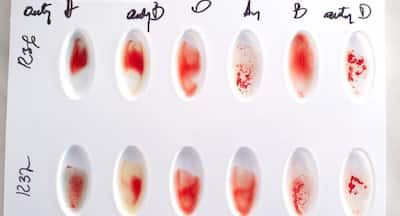Don’t Miss Out on the Latest Updates.
Subscribe to Our Newsletter Today!
How to read your medical test report: Blood typing and blood cross matching

All you need to know about reading your blood typing and blood cross matching test reports.
The basic elements of blood are same in every person, yet our blood is not alike. Blood is classified into various types or groups based on the presence or absence of special antigens (proteins, carbohydrates, glycoproteins, etc.) on the surface of red blood cells. The two most important blood group systems are ABO and the RhD antigen systems. The blood group is determined by two antigens, the ABO antigen, and the Rhesus antigen. There are eight different common blood types based on presence or absence of antigens ABO and Rh: A+, A-, B+, B-, AB+, AB-, O+, and O-.
Blood typing and blood cross matching what is it?
A blood typing test is used to identify your blood group. For the test, your blood sample is mixed with anti-A and anti-B antibodies and checked to see if the blood cells stick together (agglutinate). The serum (the liquid part of the blood without cells) is then mixed with type A and type B blood. This procedure is called back typing. Blood cross matching is a blood test that checks for compatibility between blood samples of two different people. It determines whether your blood is compatible with another s. During the procedure, a small amount of your blood is mixed with the blood from the donor.
Also Read
When are the tests recommended?
Blood typing test helps establish your blood group. The blood typing and cross-matching tests are recommended before performing blood transfusion and organ transplantation procedures. When you receive blood from a donor, it is important that the blood given to you is compatible or matched in specific ways with your blood group so as to prevent your immune system from attacking the RBCs of the donor blood. The tests are also advised before you undergo surgical procedures where significant blood loss may be expected. Cross matching is also done during pregnancy. There is a small risk that the unborn baby may have a different blood group from the mother.
Here's how to read your medical test report: Lipid profile
Reading your blood typing and blood cross matching report
The presence or absence of antigens A and B on the surface of red blood cells determines four major blood groups A, B, AB, and O. You may or may not have the antigen Rh factor (Rhesus factor) in your blood. The presence or absence of the Rh antigen on the surface of red blood cells determines whether your blood group is positive or negative. The symbols are suffixed to your ABO blood type. All the eight different common blood types have antigen H too. Here's how to read your medical test report: Blood glucose tests
Blood groups A: antigen A present on RBC; antibodies anti-B present in plasma
Blood group B: antigen B present on RBC; anti-A antibodies present in plasma
Blood group AB: both A and B antigens are present on RBC; both anti-A and anti-B antibodies absent in plasma
Blood group O: both A and B antigen absent on RBC; both anti-A and anti-B antibodies present in the plasma.
Rh-positive (Rh+): Rh factor present on RBC
Rh-negative (Rh-): Rh antigen absent on RBC
Bombay blood group (HH): H antigen absent on the RBCs (hence both A and B antigens absent too); anti-A, anti-B and anti-H antibodies present in the plasma.
Blood compatibility test looks for clumping or lack of clumping visually, or under a microscope, to infer results. If the blood groups are compatible, the donor blood can be transfused to the recipient. Transfusion of incompatible blood can cause serious, at times fatal, reaction. Here's how to read your medical test report: Blood culture test
Incompatible blood groups: Clumping
Compatible blood groups: No clumping
Image source: Shutterstock


